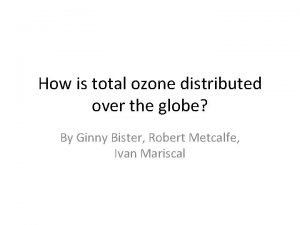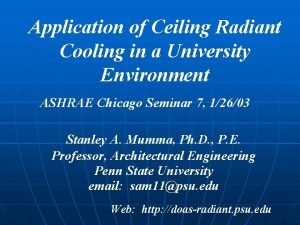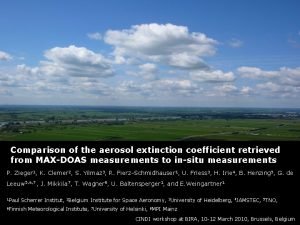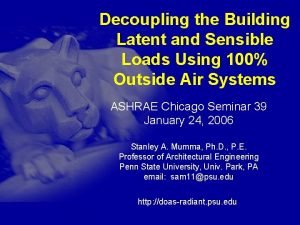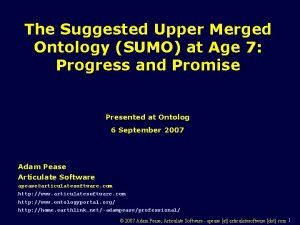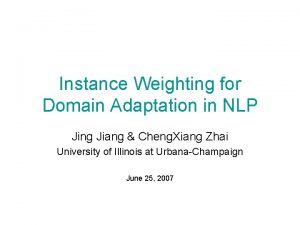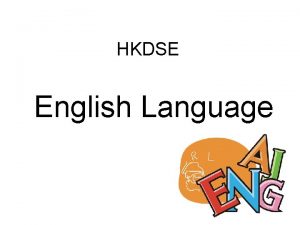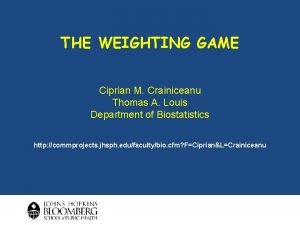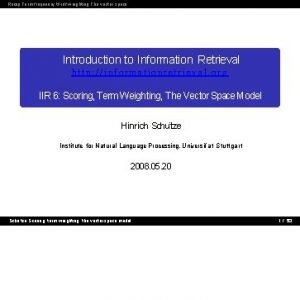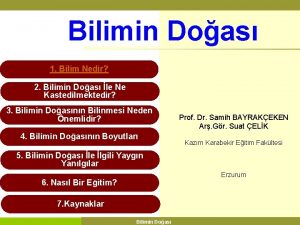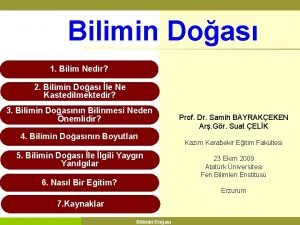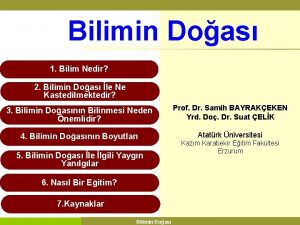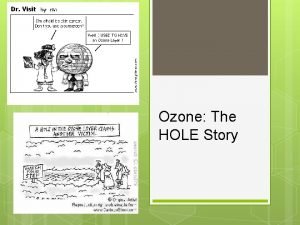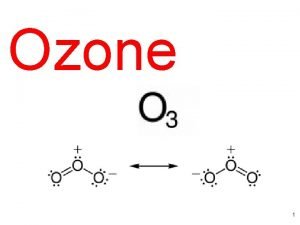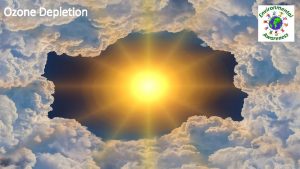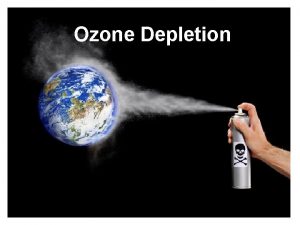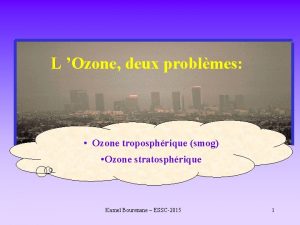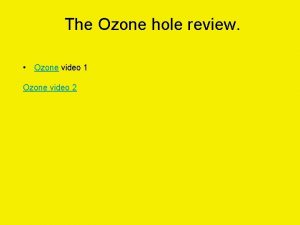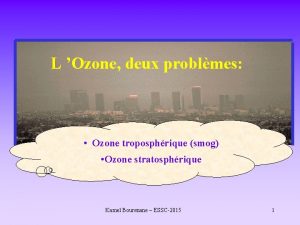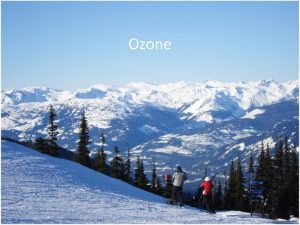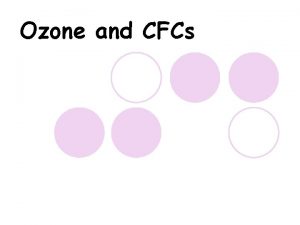The merged Weighting Function DOAS WFDOAS total ozone














- Slides: 14

The merged Weighting Function DOAS (WFDOAS) total ozone data set derived from GOME, SCIAMACHY, and GOME-2 (1995 -present) M. Weber, S. Dikty, W. Chehade, G. Kiesewetter, A. Serdyuchenko, C. von Savigny, and J. P. Burrows Institute of Environmental Physics (IUP), University Bremen (UB) www. iup. physik. uni-bremen. de/UVSAT weber@uni-bremen. de Atmospheric Composition Constellation Meeting (ACC-7) 21 -22 June 2011, Columbia, MD, USA

Releavnt ozone research at IUP University of Bremen: PI and lead scientist (J. P. Burrows) for SCIAMACHY and GOME 1 UV/VIS/NIR satellite retrievals (limb/occultation, nadir) Remote sensing from ground/ship (DOAS, MAXDOAS, etc. ) radiation transfer modelling chemical transport modelling and data assimilation laboratory spectroscopy (absorption cross-section)

Ozone data sets at IUP Ozone data sets created by IUP-UB for science and WMO UNEP Assessments: WFDOAS total ozone (see this talk) 1995 to present SCIAMACHY limb ozone profiles (global, 10 -70 km, 3 km vertical resolution, horizontal resolution 240 x 400 km, von Savigny et al. , 2005, Sonkaew et al. , 2009) 2002 -present Vertical profiles from nadir sounding GOME, SCIAMACHY, GOME-2 in prepation 1995 to present SCIAMACHY occultation profiles (solar: NH latitudes, lunar: SH) 2002 to present total ozone columns from BREDOM DOAS ground network www. iup. uni-bremen. de/sciamachy/dataproducts/index. html www. iup. uni-bremen. de/doas

Ozone data sets at IUP Data assimilation (Kiesewetter et al. , JGR, 2010) sequential assimilation of SBUV v 8 partial columns (10/1978 – 12/2007 so far) Bremen 3 D CTM and ERA-Interim/ERA-40 good agreement with observed total columns contact: gregor@iup. physik. uni-bremen. de New ozone absorption cross-sections (Serdyuchenko et al. ) Echelle (UV) and FTS (VIS) measurements 10 temperatures (193 -293 K), 220 -1000 nm high spectral resolution: 0. 003 nm precision: 2% release: late summer Updated ozone x-section reanalysed SCIAMACHY FM (Bogumil et al. 2003) and GOME-2 FM 3 data (Gür et al. , 2005) èimprovements in the Huggins band release: late summer

WFDOAS total ozone retrieval Major features of the iterative WFDOAS retrieval (Coldewey-Egbers et al. 2005, Weber et al. , 2005): after Lee et al. , 2008 Direct fitting (no lookup tables, radiative transfer part of retrieval) includes ozone temperature fit (shift in temperature profile) improved treatment of rotational Raman scattering on air molecules (Ring effect) properly accounting for the varying ozone filling-in cloud retrieval/correction using SACURA (Kokhanovsky et al. 2005) or FRESCO (Koelemeijer et al. 2001) cloud retrievals in the oxygen A-band albedo retrieved at 378 nm (LER method)

WFDOAS data sets Data sets: GOME 1/ERS-2: 1995 -present (lost global coverage after 2003) è global coverage: ~3 days, large ground pixel: 320 x 40 km 2 SCIAMACHY/ENVISAT: 2002 present è limb and nadir alternating, global coverage ~6 days GOME-2/METOP-A: 2007 -present è wide swath, daily coverage ~1 day, small ground pixel: 80 x 40 km 2 GOME 1 is the „gold standard“ for the European satellite total ozone record www. iup. physik. uni-bremen. de/gome GOME-2/METOP-B: to be launched in April 2012 GOME-2/METOP-C: ~2016

WFDOAS validation with respect to Brewer/Dobson +0. 8% Brewer +0. 6% GOME 1 0. 0% -1. 0% SCIAMACHY -0. 6% -1. 8% GOME-2 collocation criteria: <300 km

WFDOAS vs. Brewer Hohenpeissenberg (47°N) biases between satellites: 1 -2% trends: SCIAMACHY: -1%/decade until ~2010 GOME 1 SCIAMACHY GOME-2 collocation criteria: <300 km

GOME minus Brewer timeseries Trends: GOME stable SCIAMACHY: è-4%/decade until ~2007 è-1%/decade until ~2010 (trend slowdown) èseen with all algorithms used (ESA, BIRA, KNMI, see Lerot et al 2009) GOME-2 èno trend èjump of -1% after September 2009, due to detector heatup? Biases between satellites: 1 -2%

Merging strategy for GOME/SCIAMACHY/GOME-2 Merging strategy: Use GOME 1 as reference („gold standard“) Determine corrections (factor, linear trend) from GOME/satellite ratio time series using monthly means, 1°x 1. 25° binned data èmultiplicative correction SCIAMACHY è factor + linear trend GOME 2 è factor only

Corrected data sets Merged GSG data: GOME (1995/07 -2003/05), SCIAMACHY (2003/06 -2006/12), GOME-2 (2007/01 -present) use satellite with best global coverage Remaining issue (under investigation): èbias between SCIAMACHY and GOME-2 after 2009/10? m SCIAMACHY: instrumental trend slow down since ~2009 m GOME-2: jump by ~-1% after decontamination/detector heatup in September 2009

GSG merged data set: global anomalies record Arctic ozone loss 2011 very high NH ozone 2010 QBO record size ozone hole 2006 split ozone hole 2002 Science: extreme conditions within last decade (climate related? ): èsplit ozone hole in 2002, WMO 2007), record size ozone hole in 2006, very high NH ozone in 2010, Steinbrecht et al. , 2011), record Arctic ozone loss in 2011

Long-term ozone trends Ozone trends: WOUDC SBUV/TOMS/OMI (Mod V 8) GSG data set GSG merged total ozone data: www. iup. uni-bremen. de/gome/wfdoas Weber et al. , 2011

Conclusion A merged WFDOAS total ozone data set is available èGSG data set (1995 -present) WFDOAS overpass data (uncorrected data) for NDACC/WOUDC stations available èwww. iup. uni-bremen. de/gome/wfdoas Important issues when merging data sets: è justification of the reference data set (GOME 1 stable in comparison to ground) m GOME 1 although working excellently and yielding ~40% coverage is to be de-commissioned by ESA this summer (: -(. è overlap periods between instruments are available (not an issue here since all instruments GOME/SCIA/GOME-2 are still operating) è Bias/ratio and trend (linear)correction is fairly straight forward m are multiplicative or additive corrections better? è more challenging: changes in instrumental trends with time (SCIAMACHY? ), sudden jumps in the data record (GOME-2? ) m requires good knowledge of instrument status and calibration changes
 How is total ozone distributed over the globe
How is total ozone distributed over the globe Hybrid radiant doas
Hybrid radiant doas Pros and cons of lms
Pros and cons of lms Doas schoology
Doas schoology Doas spray
Doas spray Sensible loads in radiant cooling
Sensible loads in radiant cooling Suggested upper merged ontology
Suggested upper merged ontology Objectives of flowers
Objectives of flowers Nfa merged with ffa
Nfa merged with ffa Which movement
Which movement Bees lca
Bees lca Instance weighting for domain adaptation in nlp
Instance weighting for domain adaptation in nlp Hkdse english
Hkdse english The weighting game download
The weighting game download Tf-idf calculation example
Tf-idf calculation example
